Cylinder Head Installation Left
Tools Required
J 36660-A Electronic Torque Angle Meter
- Clean the cylinder head gasket surfaces on the engine block.
- Inspect the dowel pins (cylinder head locator) for proper installation.
- Clean the cylinder head gasket surfaces on the cylinder head.
- Install the NEW cylinder head gasket in position over the dowel pins (cylinder head locator).
- Install the cylinder head onto the engine block.
- Apply sealant to the threads of the cylinder head bolts.
- Install the cylinder head bolts finger tight.
- Tighten the cylinder head bolts in sequence on the first pass.
- Use the J 36660-A in order to tighten the cylinder head bolts in sequence on the final pass.
- Install the spark plug wire support and bolts.
- Measure the NEW spark plugs for the proper gap.
- Install the spark plugs.
- If reusing the engine coolant temperature gauge sensor (if applicable), apply sealant to the threads of the engine coolant temperature gauge sensor.
- Install the engine coolant temperature gauge sensor (if applicable).
- If reusing the engine coolant temperature sensor (if applicable), apply sealant to the threads of the engine coolant temperature sensor.
- Install the engine coolant temperature sensor (if applicable).
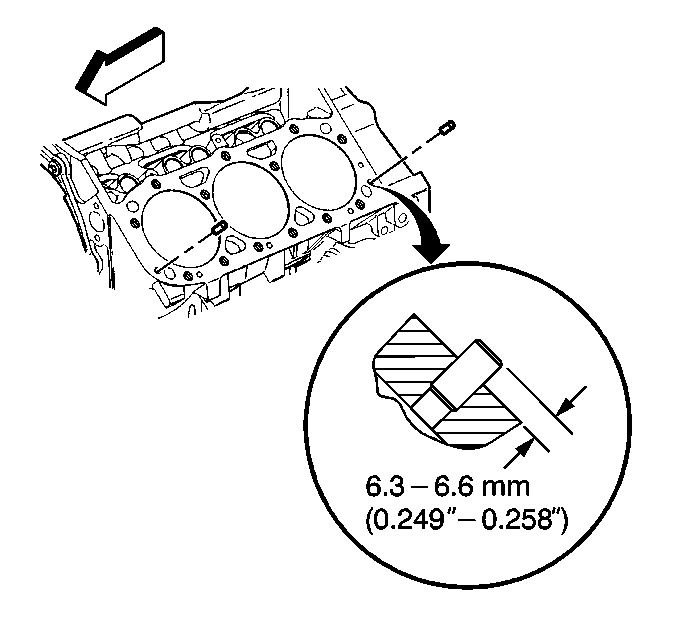
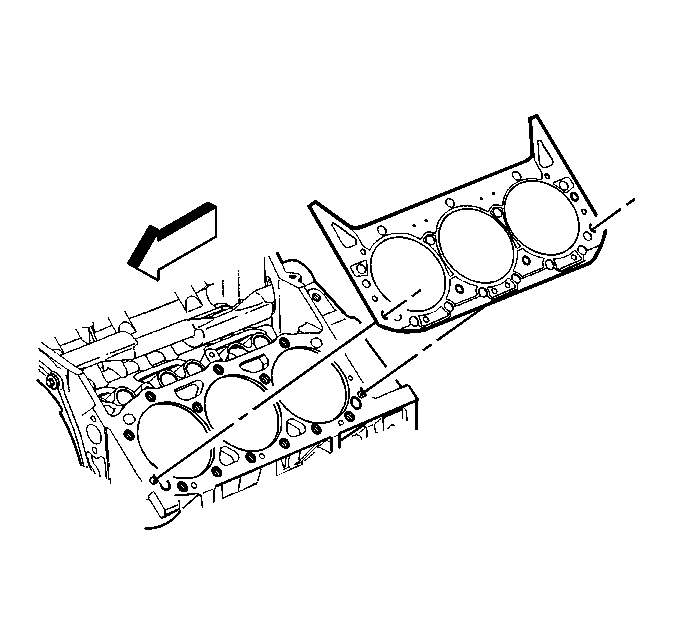
Important: Do not use any type sealer on the cylinder head gasket (unless specified).
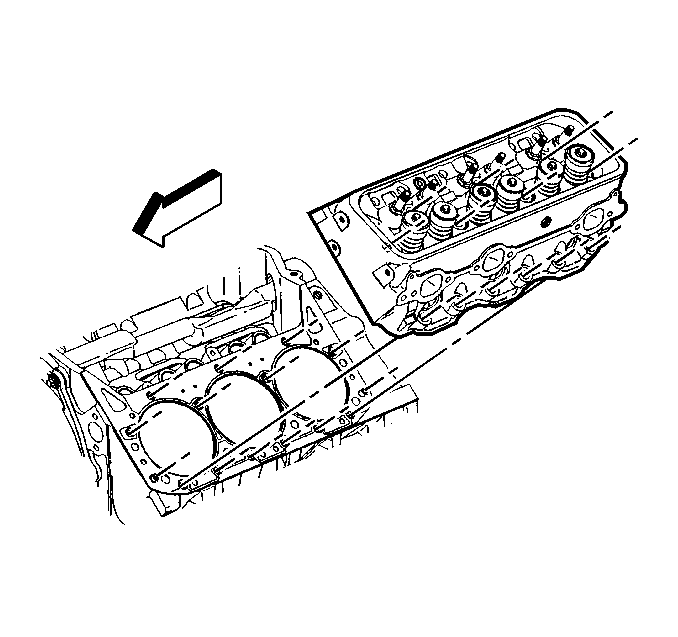
Guide the cylinder head carefully into place over the dowel pins and the cylinder head gasket.
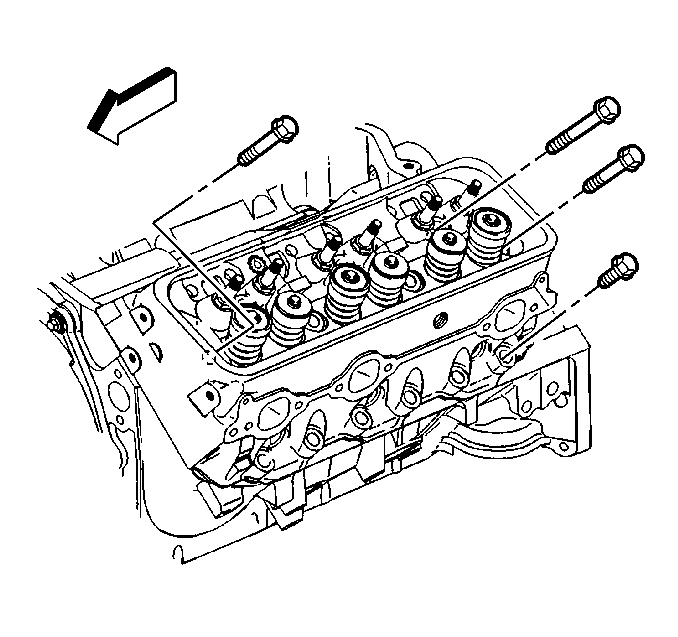
Notice: Use the correct fastener in the correct location. Replacement fasteners must be the correct part number for that application. Fasteners requiring replacement or fasteners requiring the use of thread locking compound or sealant are identified in the service procedure. Do not use paints, lubricants, or corrosion inhibitors on fasteners or fastener joint surfaces unless specified. These coatings affect fastener torque and joint clamping force and may damage the fastener. Use the correct tightening sequence and specifications when installing fasteners in order to avoid damage to parts and systems.
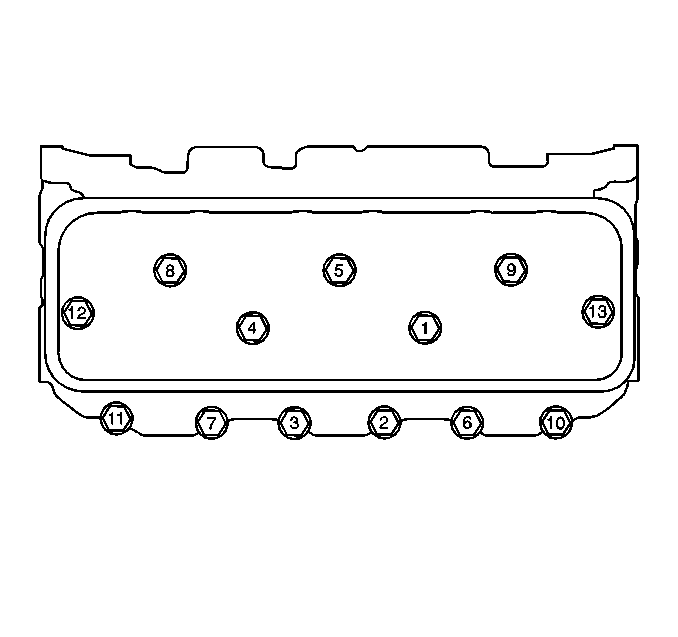
Tighten
Tighten the bolts in sequence on the first pass to 30 N·m
(22 lb ft).
Tighten
| • | Tighten the long bolts (1, 4, 5, 8, and 9) on the final pass in sequence to 75 degrees. |
| • | Tighten the medium bolts (12 and 13) on the final pass in sequence to 65 degrees. |
| • | Tighten the short bolts (2, 3, 6, 7, 10, and 11) on the final pass in sequence to 55 degrees. |
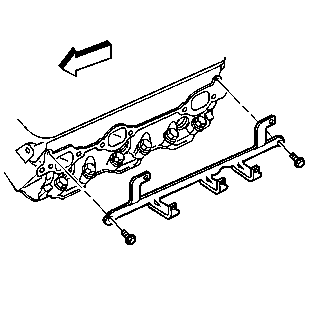
Tighten
Tighten the spark plug wire support bolts to 12 N·m (106 lb in).
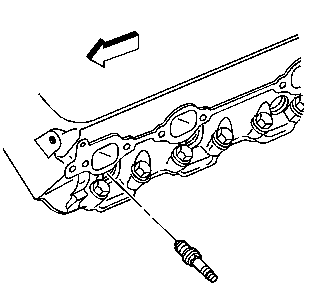
Adjust the spark plug gap if necessary.
Specification
Spark plug gap to 1.52 mm (0.060 in).
Tighten
| • | Tighten the spark plugs for a USED cylinder head to 15 N·m (11 lb ft). |
| • | Tighten the spark plugs for the initial installation of a NEW cylinder head to 30 N·m (22 lb ft). |
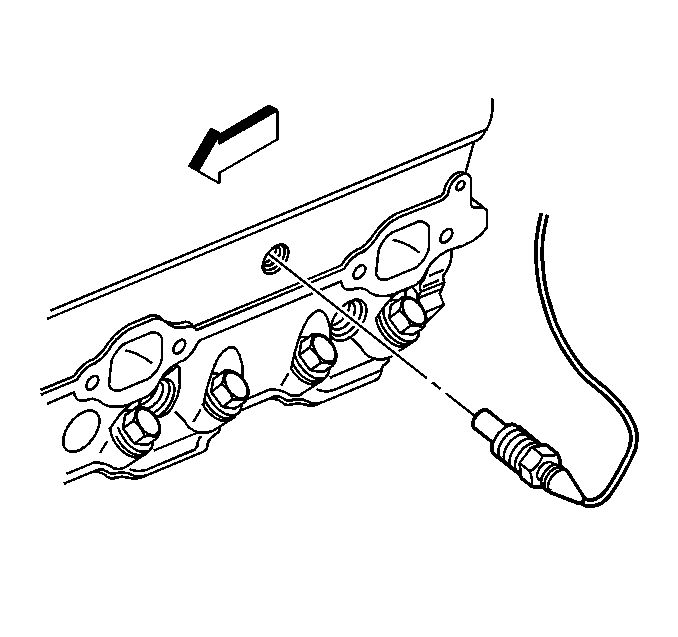
Tighten
Tighten the engine coolant temperature gauge sensor to 20 N·m
(15 lb ft).
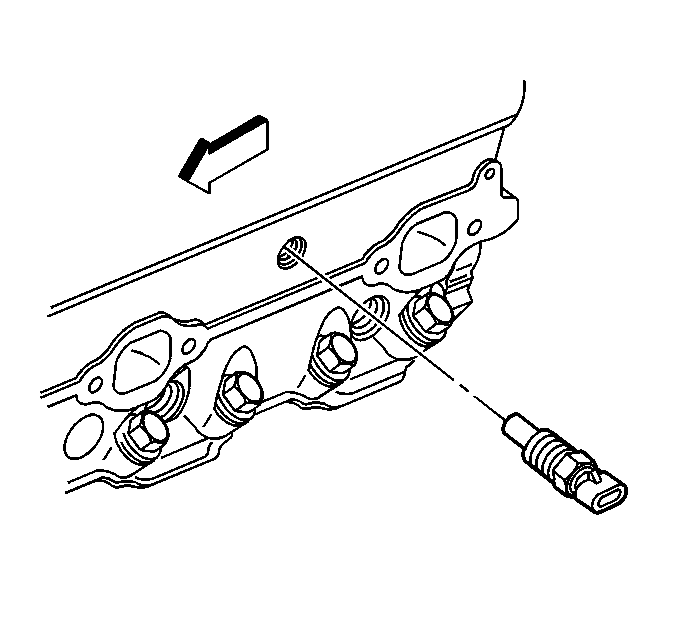
Tighten
Tighten the engine coolant temperature sensor to 20 N·m
(15 lb ft).
Cylinder Head Installation Right
Tools Required
J 36660-A Electronic Torque Angle Meter
- Clean the cylinder head gasket surfaces on the engine block.
- Inspect the dowel pins (cylinder head locator) for proper installation.
- Clean the cylinder head gasket surfaces on the cylinder head.
- Install the NEW cylinder head gasket in position over the dowel pins (cylinder head locator).
- Install the cylinder head onto the engine block.
- Apply sealant to the threads of the cylinder head bolts.
- Install the cylinder head bolts finger tight.
- Tighten the cylinder head bolts in sequence on the first pass.
- Use the J 36660-A in order to tighten the cylinder head bolts in sequence on the final pass.
- Install the spark plug wire support and bolts.
- Remove the front spark plug wire support bolt.
- Measure the NEW spark plugs for the proper gap.
- Install the spark plugs.

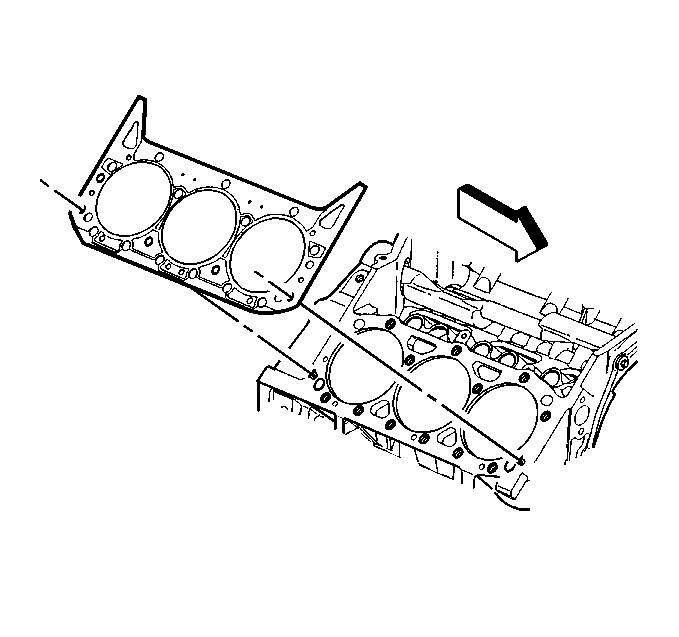
Important: Do not use any type sealer on the cylinder head gasket (unless specified).
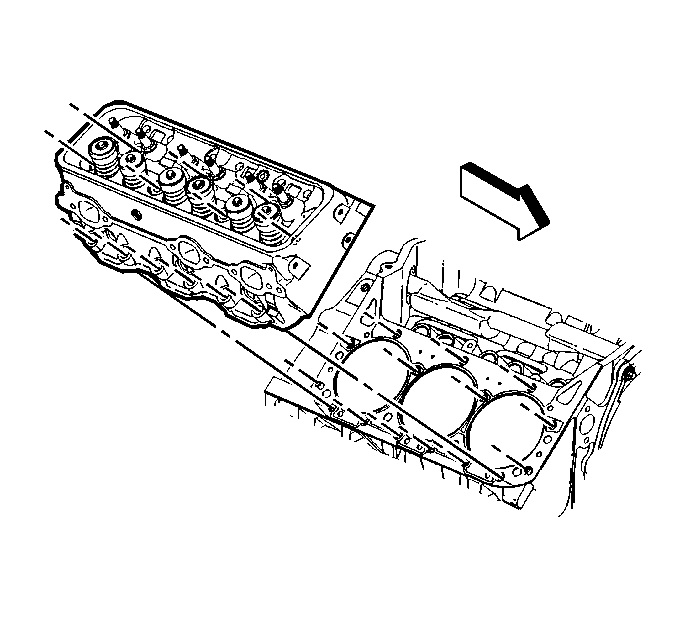
Guide the cylinder head carefully into place over the dowel pins and the cylinder head gasket.
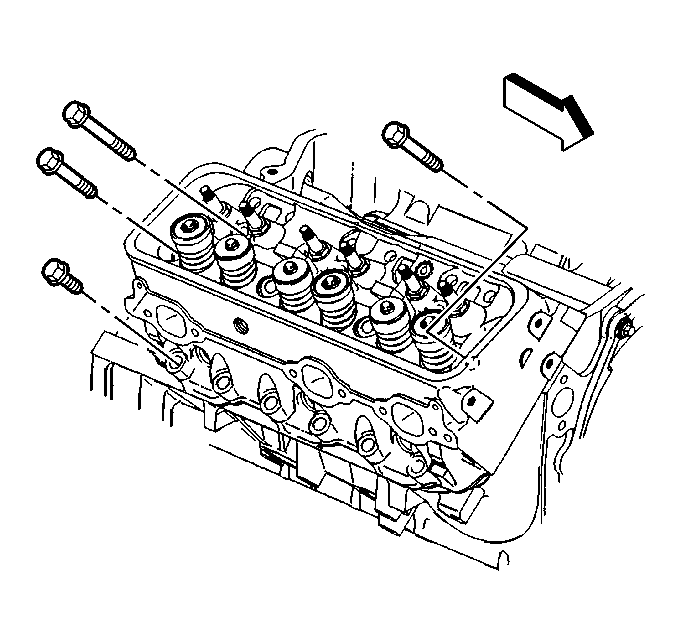
Notice: Use the correct fastener in the correct location. Replacement fasteners must be the correct part number for that application. Fasteners requiring replacement or fasteners requiring the use of thread locking compound or sealant are identified in the service procedure. Do not use paints, lubricants, or corrosion inhibitors on fasteners or fastener joint surfaces unless specified. These coatings affect fastener torque and joint clamping force and may damage the fastener. Use the correct tightening sequence and specifications when installing fasteners in order to avoid damage to parts and systems.

Tighten
Tighten the bolts in sequence on the first pass to 30 N·m
(22 lb ft).
Tighten
| • | Tighten the long bolts (1, 4, 5, 8, and 9) on the final pass in sequence to 75 degrees. |
| • | Tighten the medium bolts (12 and 13) on the final pass in sequence to 65 degrees. |
| • | Tighten the short bolts (2, 3, 6, 7, 10, and 11) on the final pass in sequence to 55 degrees. |
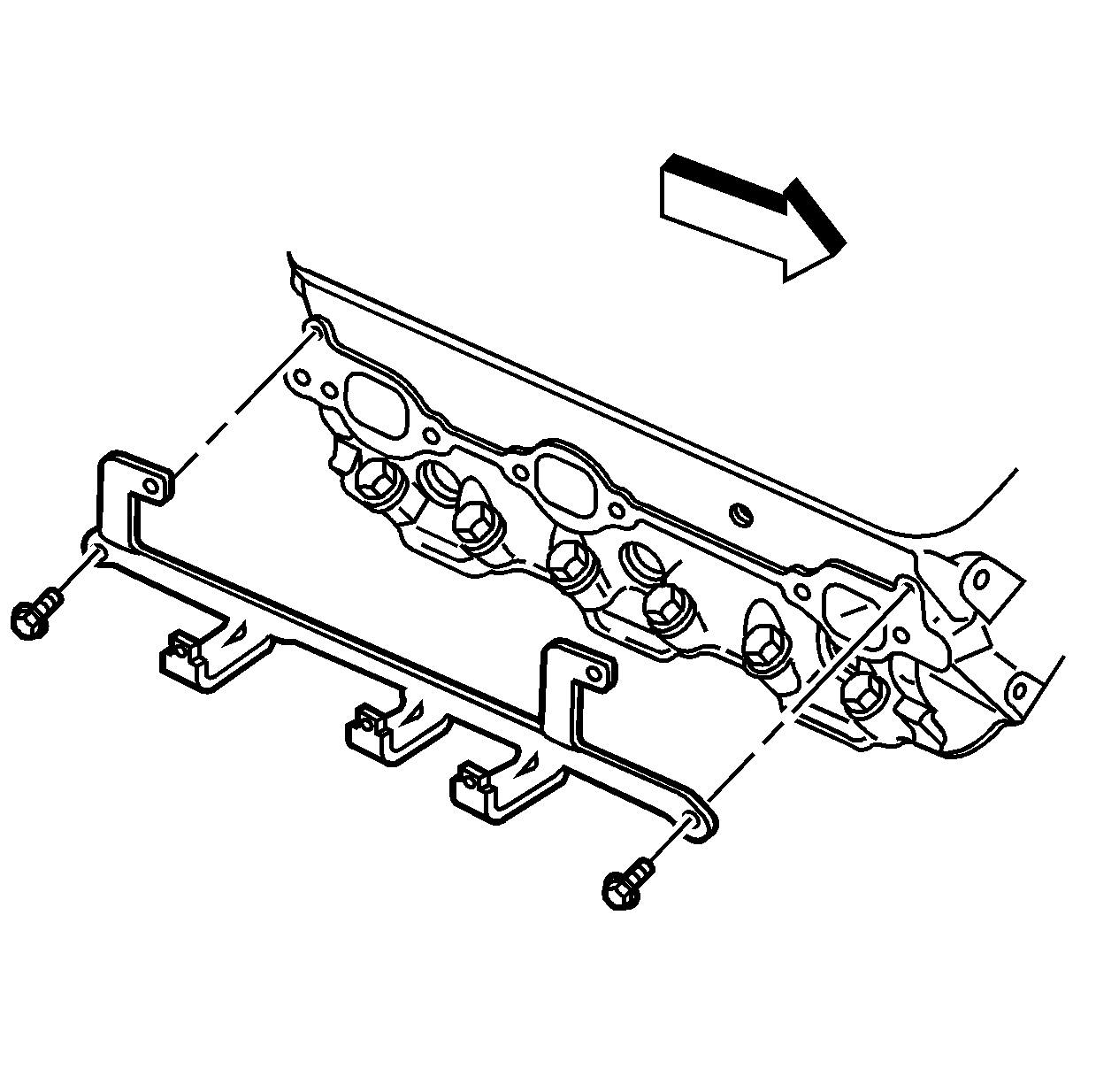
Tighten
Tighten only the rear spark plug wire support bolt to 12 N·m
(106 lb in).
The front spark plug wire support bolt is used to fasten the oil level indicator tube, and will be installed within the oil level indicator tube installation procedure.
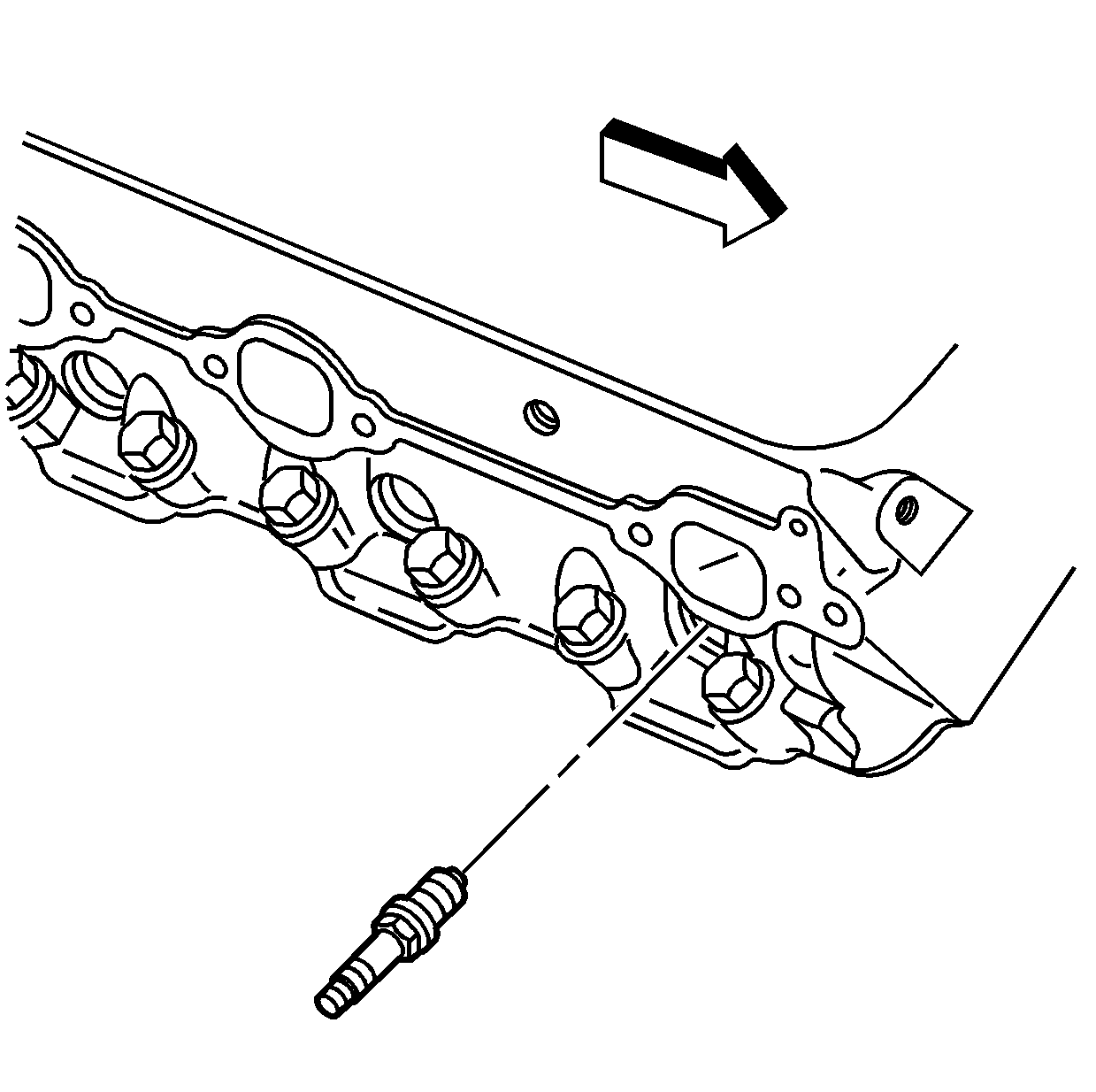
Adjust the spark plug gap if necessary.
Specification
Spark plug gap to 1.52 mm (0.060 in).
Tighten
| • | Tighten the spark plugs for a USED cylinder head to 15 N·m (11 lb ft). |
| • | Tighten the spark plugs for the initial installation of a NEW cylinder head to 30 N·m (22 lb ft). |
